Grant Wells uses his farms to put the status quo to the test. He’s been pulling back on synthetic P, K and even N for four years now. Yet, Baseline Rx soil tests show his soil is releasing natural fertility and his crops
are still yielding consistently.
This feels backwards compared to everything we’ve been taught by traditional agronomy. Less fertilizer was being applied, so how were those nutrients being built in the soil, while also supporting a healthy crop?
Two words… Biodyne biology.
You may be tired of hearing about Biodyne biology. But we’re going to stand our ground and continue preaching about it because of the impact we’ve seen it make.
1 + 1 = 3
When paired with standard fertility rates, Biodyne biology will help build your soil test faster. Our soil has three pools of nutrients:
Total Pool: All possible nutrients in the soil, whether they are tied up and unavailable, or completely free floating and available.
Extractable Pool: This pool is what your standard Mehlich 3, Bray, and Olsen soil tests measure. The harsh chemicals used in these tests can extract nutrients that your standard plant roots are not be able to.
Plant Available Pool: This is the pool of nutrients that are actually able to be taken up by plant roots.
Biodyne biologicals applied to the soil can tap into that “Total Pool” and “Extractable Pool” and free otherwise insoluble nutrients into plant available forms.
FEEDING YOUR BIOLOGY
Biologicals can be applied to your soil, but the way to make them most effective is to feed them. WEOC (aka “water extractable organic carbon”, or “soluble carbon”) is the food source for biology.
More WEOC in your soil results in higher biological activity. Higher biological activity creates more enzymes. More enzymes create more plant available nutrients. WEOC is the critical factor – it drives this process, and it also is the substance that holds those nutrients in their available form.
The higher your WEOC to CEC ratio, the better your soil can free tied-up nutrients for your crop.
Ultimately, the goal is to increase the size of that “Plant Available Pool” using the right products applied at the right time. Overapplication of any synthetic nitrogen or phosphorous is going to mine out that soil carbon. A heavy shot of P might look good on your initial soil test, but you’ll be left scratching your head a few months later when those PPM’s are back to where they started – or lower. The P has become tied-up in the “Total Pool” far from root’s reach, likely due to an imbalance of WEOC and biology in your soil.
We’ve learned that improving your WEOC to CEC number takes year-over-year patience. The instant gratification of applying a “build rate” will only end up wasting your money and depleting your soil carbon in the long run.
Each consecutive year we apply Biodyne biology with appropriate amounts of NPKS will only continue to
improve our WEOC to CEC score. And, the better our WEOC/CEC, the better our crop can tap into free fertility.
Want the proof? Grant has four years of data on multiple farms he’s trialed pulling P & K (and even N) rates back.
Some helpful definitions as you review the four-year results below:
We see most farms pull a 4-5 WEOC/CEC rating prior to receiving any biology, like all of these farms did. Ideally, we want to see that number above 7.
The “Standard P” and “Standard K” rows show the results we are all familiar with receiving from a standard soil test. These numbers represent the “Extractable Pool” of nutrients.
The “Total P H3A” and “Total K H3A” rows show the results we receive from Baseline Rx. These are the nutrients actually able to be taken up by plants in the “Plant Available Pool”.
Olberding farm 4-year trial
The Background:
Across four years, this farm had one application of hog manure, total. An additional low rate (~20 lbs) of in-season potash was applied. According to removal rate recommendations, this equates to a 35% P removal rate and an 80% K removal rate.
Each year, this farm was also fed the Biodyne 401 + 501 teams of biology. 200 lbs of N was applied, and 246 bu/ac was achieved in 2024.
The Analysis:
The WEOC/CEC ratio increased to that 7+ level we like to see in a free fertility system. The Standard and H3A levels of P and K both rose significantly despite the low doses of fertility we applied.
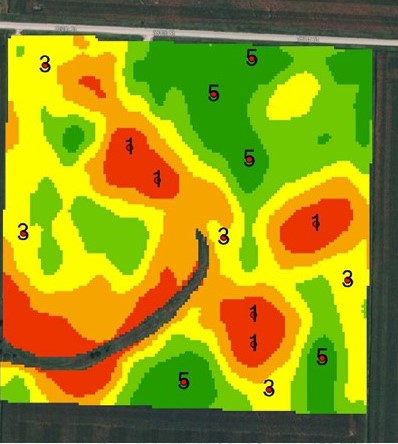
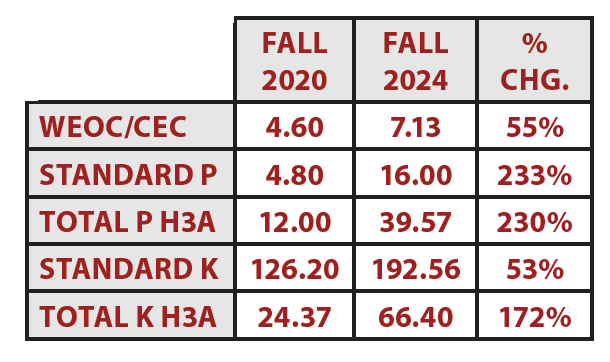
Dad's 80 farm 4-year trial
The Background:
This farm was not applied any P across four years. Only a small amount of potash was applied in-season (~47 lbs).
Each year, this farm was also fed the Biodyne 401 + 501 teams of biology. 195 lbs of N was applied, and 220 bu/ac was achieved in 2024 (late planted).
The Analysis:
Notice the Standard P – it decreased. P was never added to the soil, yet the H3A P still increased. The biological and WEOC system extracted the free P from the “Extractable Pool” and made it available for the crop to uptake.
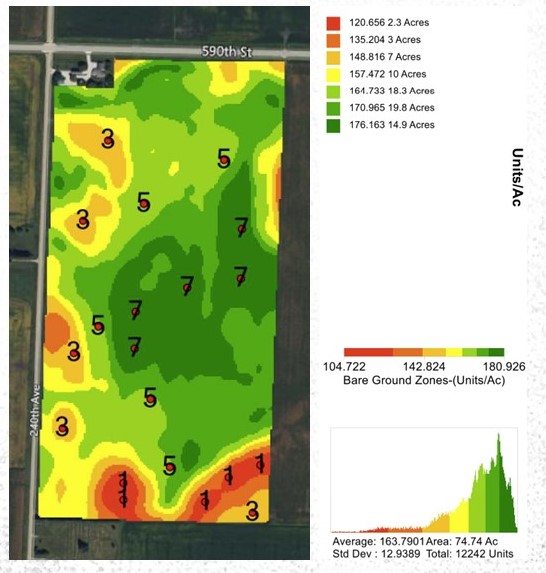
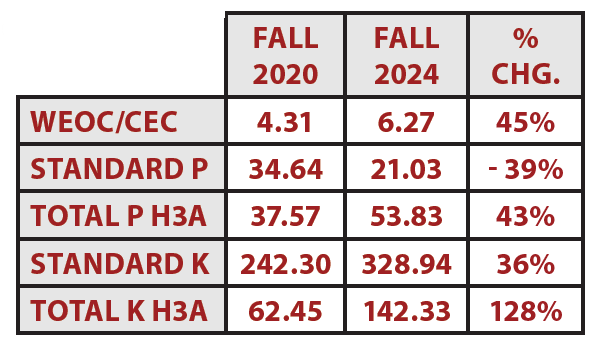
woods south farm 4-year trial
The Background:
Small amounts of P and K were applied through the years, but this was the farm Grant really wanted to test pulling back N.
Each year, this farm was fed the Biodyne 401 + 501 teams of biology. In 2024, two shots of Amino and 136 lbs of N were applied. The farm yielded 260 bu/ac.
The Analysis:
The WEOC/CEC ratio had a 97% increase. Over-applying fertilizer burns carbon out of the system, and this soil responded well to the reduced amounts of N, P, K. Through the Standard and H3A results, you’ll see the soil was able to tap into its own free fertility to supply the crop with sufficient nutrients.
These results are indicating that a nutrient application would be beneficial this growing season. Grant plans to apply manure, since we’ve seen the best result across the WEOC/CEC, H3A pools, and yield when manure is paired with Biodyne biologicals.
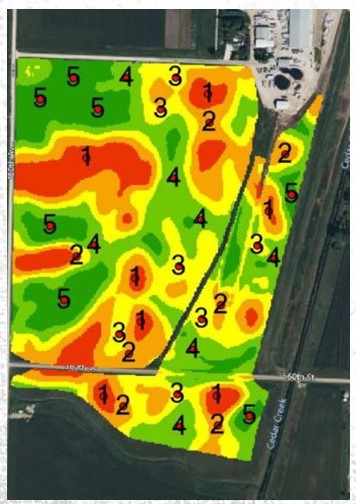
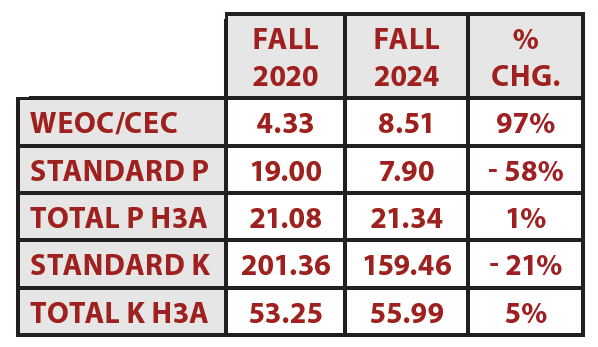
The Big Takeaway:
While some farms look like they were “mined” based on the Standard test, you’ll find we actually maintained or increased Plant Available levels of nutrients thanks to Biodyne biology.
Manure showed the greatest Plant Available increase, even at reduced rates, due to increased soil health by building WEOC levels over time.
Watch the Webinar
Have a couple hours and want to dive deeper into this information? Tune in as Grant Wells is joined by Mason Claude and Aaron Bloom to discuss Grant’s field trials, biology, WEOC, and Baseline Rx.




